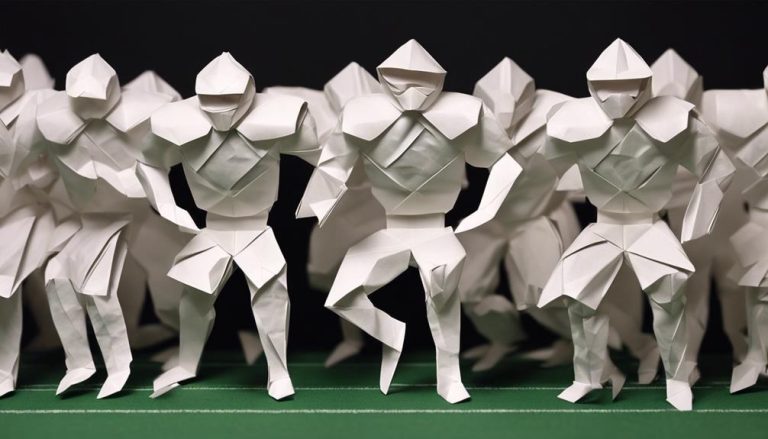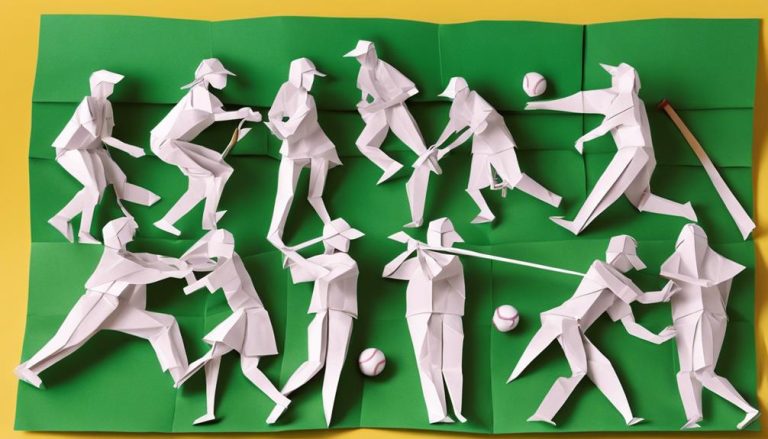General Rules of Footvolley
You're about to immerse yourself in the world of footvolley! To get started, know that the objective is to hit the ball over the net to score points. A standard court is 18m long and 9m wide, with a net at 2.24m (men) and 2.14m (women). Teams consist of blockers and defenders, with substitutes allowed during timeouts or injuries. A match is typically best two out of three sets, with a 30-second timeout per set. Understanding the rules will help you navigate the game, but there's more to discover – get ready to uncover the nuances of footvolley!
Game Objective and Scoring
Your objective in a game of footvolley is to hit the ball over the net and score points by making it land on the opponent's court. This may seem straightforward, but executing it effectively requires a solid game strategy. To develop winning tactics, you'll need to master the art of teamwork, communication, and adaptability.
A game of footvolley is typically played in sets, with each set won by the team that first scores 18 points, with a minimum lead of two points. If the score reaches 17-17, play continues until one team leads by two points. Your team's game strategy should focus on exploiting the opponent's weaknesses while minimizing your own. This might involve identifying the opponent's weaker hitter or blocker and targeting them with your serves and attacks. By staying one step ahead of your opponents, you'll increase your chances of scoring points and ultimately winning the game.
Court Dimensions and Equipment
A standard footvolley court measures 18 meters long and 9 meters wide, with a net standing at 2.24 meters high for men and 2.14 meters high for women. As you step onto the court, you'll notice the flooring is usually made of sand, which provides the perfect grip for your footwork. The court's dimensions and equipment are specifically designed to accommodate the unique demands of footvolley.
The net height, in particular, is essential, as it requires you to jump high and spike the ball with precision. You'll need to time your jumps perfectly to clear the net and outmaneuver your opponents. The court flooring, on the other hand, is designed to provide traction and stability, allowing you to move quickly and change direction on a dime.
As you play, you'll appreciate the careful consideration that goes into designing a footvolley court. Every aspect, from the net height to the court flooring, is tailored to create an exciting and challenging game that requires skill, strategy, and athleticism.
Player Roles and Substitutions
In a footvolley game, each team consists of two players, known as blockers and defenders, who work together to outmaneuver their opponents. As a player, you'll need to understand your role and work with your teammate to achieve victory.
| Role | Responsibilities | Key Skills |
|---|---|---|
| Blocker | Block opponent's attacks, create scoring opportunities | Strength, jumping ability, timing |
| Defender | Receive serves, defend against opponent's attacks | Agility, reaction time, court awareness |
| Substitutes | Replace players during timeouts or injuries | Flexibility, adaptability, quick thinking |
| Both | Communicate effectively, work together to outmaneuver opponents | Player chemistry, Team cohesion |
| Both | Adapt to opponents' strategies, adjust gameplay accordingly | Strategic thinking, problem-solving |
You'll need to develop a strong understanding of your teammate's strengths and weaknesses to maximize your chances of winning. By working together, you can create a formidable team that's greater than the sum of its parts. Remember, player chemistry and team cohesion are key to success in footvolley.
Game Duration and Timeouts
As you learn about the game duration and timeouts in footvolley, you'll discover that a standard match consists of three sets, each lasting a specific amount of time. You'll also find that timeouts play an important role in giving players a brief break to regroup and reassess their strategy. Understanding the rules governing match length, timeout rules, and stoppage time will help you navigate the game with confidence.
Match Length
How long can you expect a footvolley match to last, and what's the deal with timeouts? Well, the game duration varies depending on the type of match you're playing. In a Pro Match, you can expect to play best two out of three sets, with each set lasting until one team reaches 18 points with a minimum lead of two points. If the score is tied at 18-18, play continues until one team leads by two points.
In Speed Games, which are played in a more casual setting, the match duration can be adjusted to fit the time available. Typically, these games are played in shorter sets, with a lower point threshold, such as 11 points.
As for timeouts, you're allowed to take a brief break during the match to regroup and strategize with your partner. The specifics of timeouts will be covered in more detail later, but for now, just know that they're an essential part of the game, allowing you to recharge and refocus.
Timeout Rules
Taking a timeout during a footvolley match allows you to recharge and refocus, and it is important to understand the rules governing these brief breaks. Each team is entitled to one 30-second timeout per set, and you can take it during a dead ball situation, such as between plays or after a point is scored. You can also take a timeout to adjust your timeout strategies, like switching up your serving or receiving tactics. However, you must remember that the referee has the discretion to deny a timeout request if it's deemed unnecessary or disruptive to the game flow.
It's essential to use your timeouts wisely, as they can have a significant impact on the outcome of the match. You might want to call a timeout to regroup after a series of mistakes or to celebrate a crucial point. Whatever your reason, make sure you're aware of the rules and use your timeouts strategically. By doing so, you'll be able to stay focused and adapt to the game's progression, ultimately giving you an edge over your opponents.
Stoppage Time
You're allotted a certain amount of time to complete a footvolley match, and understanding the rules governing game duration and timeouts is essential to your strategy. A standard footvolley match consists of two sets, each lasting 25 minutes. If the score is tied at 24-24, play continues until one team leads by two points. You're allowed two 30-second timeouts per set, which can be taken concurrently with injury timeouts.
| Timeout Type | Duration |
|---|---|
| Regular timeout | 30 seconds |
| Injury timeout | Until player is ready to resume |
| Half-time break | 5 minutes |
| Between sets | 3 minutes |
Injury timeouts are granted at the referee's discretion and last until the injured player is ready to resume play. Remember, the referee has the final say in all timeout-related decisions. Make the most of your timeouts to regroup, strategize, and come back stronger. With a clear understanding of game duration and timeouts, you'll be better equipped to manage your time and outmaneuver your opponents.
Ball In and Out of Play
When you're playing footvolley, understanding what constitutes a ball in or out of play is essential. You'll need to know whether a ball is still in play if it touches a line or has completely crossed over it. Let's explore the rules surrounding a ball over a line and when a ball is considered out of play if it touches a line.
Ball Over Line
The ball is considered out of play if it lands or touches the line or crosses completely over the center line or sidelines, and the referee's decision is final. As a player, you need to understand that if the ball goes over the line, it's out of play. Let's say the ball is rolling towards the sideline, and you're not sure if it's still in play. The referee will make the call, and you'll need to respect their decision.
When the ball crosses the line, the referee will blow their whistle to stop the game. If you're unsure whether the ball is in or out, wait for the referee's signal. Don't let your emotions get the better of you – if the referee calls the ball out, it's out, and you need to let it go. Remember, the referee's decision is final, and arguing with them won't change the call. Instead, focus on getting back into position and waiting for the next play. By following these rules, you'll guarantee a smooth and enjoyable game for everyone involved.
Ball Touches Line
Understanding the nuances of a ball touching the line is vital, as it can greatly impact the game's momentum and outcome. When you're playing footvolley, you'll often find yourself in situations where the ball barely grazes the line, leaving you wondering whether it's in or out. In such cases, it's important to know the rules to avoid disputes and controversies.
If the ball touches the line, it's still considered in play. However, if any part of the ball crosses the line, it's out of play. This might seem straightforward, but it can get complicated during intense matches. Line controversies and boundary disputes can arise when players disagree on whether the ball touched the line or not. To avoid these disputes, it's crucial to pay attention to the ball's movement and trajectory. If you're unsure, don't hesitate to ask the referee for clarification. Remember, a clear understanding of this rule can make all the difference in your game. By being aware of the rules, you can focus on what matters most – enjoying the game and giving it your best shot.
Fouls and Misconduct Penalties
If you commit a foul or engage in misconduct during a footvolley game, you'll face penalties that can impact your team's chances of winning. The penalty system is in place to guarantee fair play and maintain a safe environment for all players.
Here are some key penalties to be aware of:
- Yellow Flag: A warning given to a player who has committed a minor foul. This is a cautionary measure, but it's a warning that you're getting close to crossing the line.
- Red Card: If you receive a red card, you're ejected from the game immediately. This is usually given for severe misconduct, violent behavior, or repeated yellow flags.
- Free Hit or Throw: If you commit a foul, the opposing team may be awarded a free hit or throw, giving them an advantage.
- Game Suspension: In severe cases, players may face suspension from multiple games or even the entire tournament.
Frequently Asked Questions
Can Players Wear Jewelry During a Footvolley Match?
As you step onto the sun-kissed court, your stylish earrings glinting, you wonder: can you wear jewelry during a footvolley match? Unfortunately, fashion risks safety, and personal expression must yield to rules that prioritize your well-being over trendy accessories.
Can a Player Touch the Net and Still Play the Ball?
You're wondering if a player can touch the net and still play the ball? Well, unfortunately, if you make net contact, it's a fault, and you'll lose ball control, so be careful not to touch that net!
Are Footvolley Players Allowed to Wear Cleats?
"As you step onto the sandy court, you wonder, can you wear cleats? Yes, you can, as they provide ankle support and sole grip, giving you the freedom to move freely, unshackled from worry."
Can a Player Be Substituted During a Timeout?
When you're considering timeout strategies, know that, yes, a player can be substituted during a timeout, but only in cases of injury, following the injury protocol to guarantee the player's safety and well-being.
Are Spectators Allowed to Coach Players During a Match?
As you step onto the sun-kissed court, the roar of the crowd stills, awaiting your next move. But here's the deal: spectators, no matter how well-intentioned, can't coach players during a match; it's a sideline etiquette breach, compromising coaching ethics, and your freedom to play unfettered.






